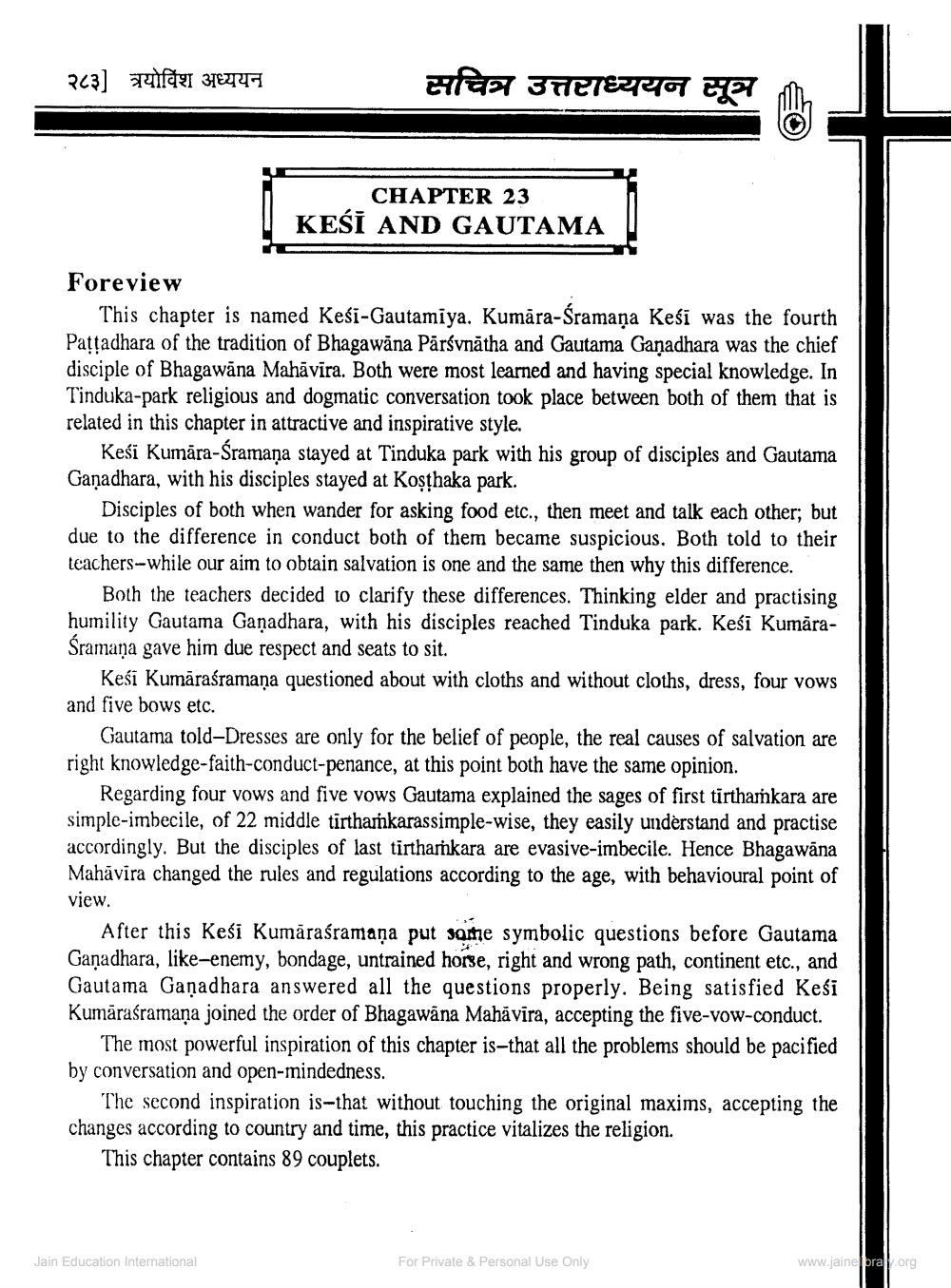________________
223]
f
37€445
सचित्र उत्तराध्ययन सूत्र
CHAPTER 23 KEŚĪ AND GAUTAMA
Foreview
This chapter is named Kesi-Gautamiya. Kumāra-Śramana Keśi was the fourth Pattadhara of the tradition of Bhagawāna Pārsvnātha and Gautama Ganadhara was the chief disciple of Bhagawāna Mahāvīra. Both were most learned and having special knowledge. In Tinduka-park religious and dogmatic conversation took place between both of them that is related in this chapter in attractive and inspirative style.
Kesi Kumāra-Sramana stayed at Tinduka park with his group of disciples and Gautama Gañadhara, with his disciples stayed at Kosthaka park.
Disciples of both when wander for asking food etc., then meet and talk each other; but due to the difference in conduct both of them became suspicious. Both told to their teachers-while our aim to obtain salvation is one and the same then why this difference.
Both the teachers decided to clarify these differences. Thinking elder and practising humility Gautama Ganadhara, with his disciples reached Tinduka park. Kesi KumāraŠramana gave him due respect and seats to sit.
Kesi Kumāraśramaņa questioned about with cloths and without cloths, dress, four vows and five bows etc.
Gautama told-Dresses are only for the belief of people, the real causes of salvation are right knowledge-faith-conduct-penance, at this point both have the same opinion.
Regarding four vows and five vows Gautama explained the sages of first tirthamkara are simple-imbecile, of 22 middle tirthamkarassimple-wise, they easily understand and practise accordingly. But the disciples of last tirtharnkara are evasive-imbecile. Hence Bhagawāna Mahāvira changed the rules and regulations according to the age, with behavioural point of view.
After this Kesi Kumāraśramana put some symbolic questions before Gautama Ganadhara, like-enemy, bondage, untrained horse, right and wrong path, continent etc., and Gautama Ganadhara answered all the questions properly. Being satisfied Kesi Kumāraśramana joined the order of Bhagawana Mahāvīra, accepting the five-vow-conduct.
The most powerful inspiration of this chapter is-that all the problems should be pacified by conversation and open-mindedness.
The second inspiration is-that without touching the original maxims, accepting the changes according to country and time, this practice vitalizes the religion.
This chapter contains 89 couplets.
Jain Education International
For Private & Personal Use Only
www.jainebrallorg




